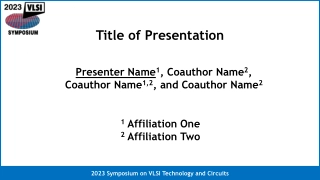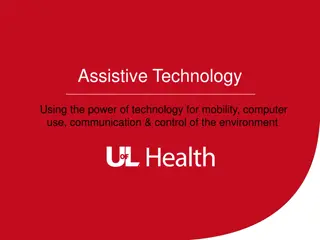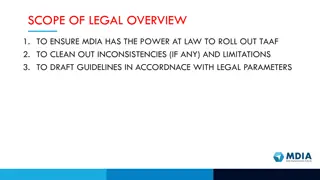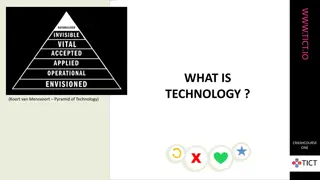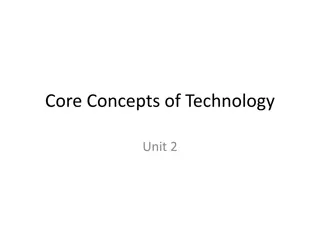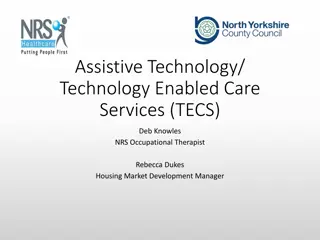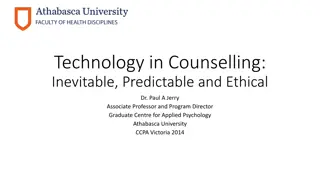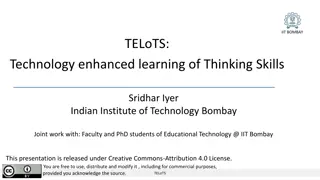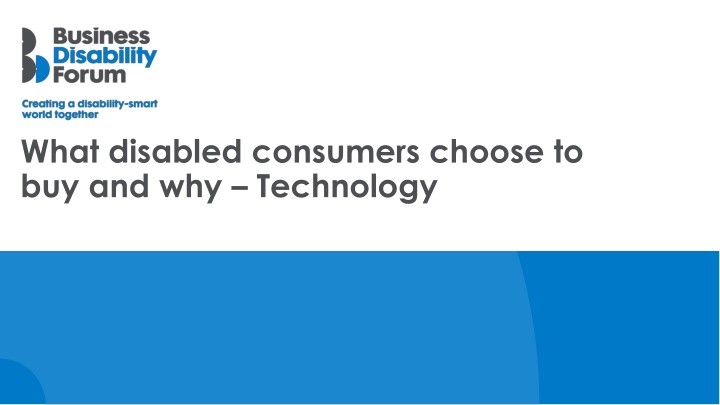
Accessible Technology Choices for Disabled Consumers
Discover why disabled consumers in the UK, with their significant spending power, prefer to invest in technology products. Learn about the key factors influencing their purchasing decisions, such as accessibility features, detailed product information, and the importance of customer service support.
Download Presentation

Please find below an Image/Link to download the presentation.
The content on the website is provided AS IS for your information and personal use only. It may not be sold, licensed, or shared on other websites without obtaining consent from the author. If you encounter any issues during the download, it is possible that the publisher has removed the file from their server.
You are allowed to download the files provided on this website for personal or commercial use, subject to the condition that they are used lawfully. All files are the property of their respective owners.
The content on the website is provided AS IS for your information and personal use only. It may not be sold, licensed, or shared on other websites without obtaining consent from the author.
E N D
Presentation Transcript
What disabled consumers choose to buy and why Technology 1
Spending power of disabled consumers In the UK, it s thought that some seven million people of working age have a disability. They have a spending power, known as the "purple pound" worth around 274bn, and they want to spend on technology. This includes hardware such as TVs and phones, software such as video games, and streaming services. As technology has become an ever-greater part of our lives following the COVID- 19 pandemic, businesses have more and more to gain from demonstrating that they are willing to meet disabled consumers technology and customer support needs. 2
Information about accessibility is key Disabled consumers wanted to know that the technology they were buying would work for them. 63 per cent of respondents said that disability or access needs influenced their choices when buying technology. How big are the remote-control buttons for the new TV? Is there large and clear print on the remote control and TV? Disabled consumer 3
But it isnt always easy to find Most of our respondents struggled to find the information they were looking for. Over half of respondents (55 per cent) said that finding the information they needed was either a little or a lot more challenging. When they did make a purchase, they were often left feeling unsure that they had made the right choice. Only 46 per cent of respondents said they felt confident that they were making the right choice when they made a technology purchase. 4
Consumers need detailed information Disabled consumers were often looking for specific information about the products and services on offer. When asked what factors they considered when buying, the most influential factor was general features and specification of the product mentioned by 74 per cent. This could include information about the weight and size of physical products, or technical specifications such as screen brightness or whether it would work with other assistive technology they used. The item was not clearly described. There were just picture images rather than a full detailed breakdown of how the item operates and a description of its design. 5
Customer service support Disabled consumers wanted to call on customer service staff while purchasing to make sure they were buying something that was right for them. They also wanted to be able to call on customer service support for help setting up and using technology after purchasing. It's often difficult to get accessible instructions for a tech product in Braille or audio, and not all sales staff in a high street [shop] know how to use or turn on accessibility features. The models did not show which had built in accessibility and it would have taken an age to trail through them. Even the customer service people didn't seem to be bothered to do it, so I didn't purchase. 6
Getting it right Informed customer service staff Consumers were quick to praise when customer service staff could help them make the right decision. PC World customer service online were helpful for me obtaining IT equipment that was suitable for me. Disabled consumer Buying a new laptop and, after consulting family and comparison websites, I was very competently guided by customer services through the choices available without any pressure to buy. [I was] treated throughout politely, with understanding and compassion. A very positive experience. Disabled consumer 7
Getting it right Attracting disabled consumers Getting it right for disabled consumers can become a virtuous circle they are more likely to rely on reviews and recommendations from other disabled people. 23 per cent of respondents said that when possible, I will filter or look for reviews and recommendations from people like me. Generally, 45 per cent of respondents said that one of the most influential factors when deciding what to buy was positive recommendations and reviews. 8
Key recommendations Train customer service and sales staff Make sure that customer service and sales staff have an understanding of disability and how it could affect how different users would use technology. They should have a confident knowledge of the technical information about the products and services on sale, including accessibility features. Where staff don t have the information, they should know how to signpost consumers to internal experts who have the answers. Once consumers have made a purchase, they should be able to call on reliable support from staff who have confident knowledge of how the products and services work and how disabled customers will access and use them. 9
Key recommendations Clear and detailed information Products and services should be accompanied by clear and detailed information about features such as weight, size, technical specification and other relevant details. This should be easy to find and available in accessible formats. It should be straightforward to identify whether something is compatible with other accessible technologies that users rely on. 10
Key recommendations Manuals and specifications in accessible formats Users rely on manuals and specifications to set up and use technology for themselves. Make sure that this is available to users in accessible formats. It must be screen reader accessible and using a font and font size that is large enough to be read easily. Use language considerately technical jargon can be difficult to understand, so make it as simple as possible (while remaining accurate) and consider providing easy-read alternatives. 11
Conclusion Disabled consumers need to know that the technology they buy will work for them. To complete a purchase, they will look for: Accessible products that meet their needs Detailed and useful information about the products and their technical specification Helpful and knowledgeable customer support staff before and after purchasing. Providing these things will make it far more likely for disabled consumers to complete a technology purchase with your business. 12
About Business Disability Forum Business Disability Forum is the leading business membership organisation in disability inclusion. We are trusted partners, working with business, Government and disabled people to improve the life experiences of disabled employees and consumers, by removing barriers to inclusion. Find out more about the benefits of joining us at businessdisabilityforum.org.uk/membership. 13
Contact us Business Disability Forum businessdisabilityforum.org.uk enquiries@businessdisabilityforum.org.uk +44-(0)20-7403-3020 E: T: 14

